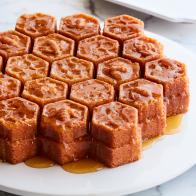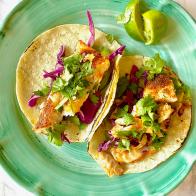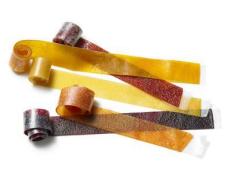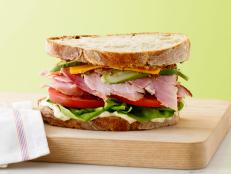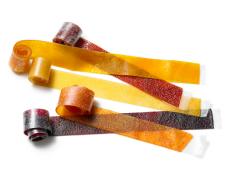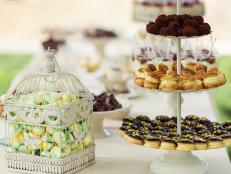Five (More) Reasons to Love Dessert

I have a sweet tooth, so my favorite part of a meal is dessert. In addition to being sweet and fabulous, though, dessert can be a great strategic player in helping picky eaters becoming more adventurous. And I don't mean in the old-school "clean your plate so you can eat dessert" sort of way.
Here are five dessert strategies that I use in our household to combat picky eating:
Most kids love dessert. So if you serve a child who loves cookies a new kind of cookie (say, an oatmeal chocolate chip cookie instead of her normal favorite gingersnap), she will probably dig it. And then you can have a conversation about how fun it was to try something new. (If she doesn't go for the swap, no big deal, because dessert is an optional course; there's no risk of you caving in and becoming a short-order cook.)
In our house, everyone gets dessert, and I include dessert in my overall (rough) calculations of how healthy our meal is. Removing the "reward" element from dessert makes the main dinner less of the enemy ("Finish your beans or you won't get dessert!"). The relationship isn't causal; it's sequential, which is a critical difference. Note: You can always serve healthier desserts if you feel like your family isn't eating enough of the main dinner.

(Here's the corollary to No. 2.) When my kids ask me what's for dessert, my answer is always the same: "You'll see when it's time for dessert." If the family hasn’t eaten as well as I'd hoped, then I might change the dessert I had in mind. Maybe instead I'll serve apple slices with almond butter. Or I'll saute up some sliced banana to serve with low-fat Greek yogurt. I'll save the ice cream sundaes for a day when everyone filled up on protein, fiber and vitamins at dinner.
4. Make a dessert platter of pre-portioned sweets coupled with a healthier item.
I often arrange pre-portioned sweets on a large cutting board and then add an "open quantity" item, such as a big bowl of fruit or yogurt. The girls love seeing what's on the dessert platter. For instance, I might serve bite-size muffins alongside a large pile of fruit kebabs. I ask the kids if they'd like one or two mini muffins (giving them a choice is helpful here), and everyone helps themselves to fruit kebabs more freely. (See Episode 5 of The Picky Eaters Project.)
It's easy to turn to packaged treats after a long day, but it's worth the extra energy to get your kids to fall in love with your cooking. Why? Because if they love your version of any recipe, you can (slowly!) tweak it over time to make it healthier. It's hard to tweak the recipe of a cake you bought baked. But if you make a cake that your kids love, you can slowly swap out the flour for whole-wheat pastry flour, you can slowly replace some of the oil and sugar with applesauce, and you can add in a few tablespoons of flax seed. Tip: Don't start with the "healthy" version. Let them fall in love with your cooking first before you slowly implement healthier swaps (see my bonus episode on Transitional Recipes).
There you have it: five ways to have dessert work for you. As a bonus, here are some dessert platter ideas. Pick one item from the first column and serve in tiny portions (allow kids to choose one or two), and add a large quantity of an item from the second column.

• Espresso cups (or shot glasses) of quick homemade pudding like this one (just eliminate the spice to make kid-friendly)
• Thin slivers of an unfrosted cake (consider whole-wheat pastry flour!)
• Homemade frozen yogurt (blend frozen fruit and Greek yogurt in a food processor until smooth)
• A bowl of raw almonds mixed with dried fruit (apricots, raisins, prunes)
WATCH: Melissa shares why, and how, she’s tackling her family’s picky eating — and yours on her new Web series, The Picky Eaters Project.
